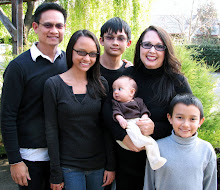
The first grader is introduced to arithmetic in a multisensory approach, bringing math to life, or life to math! A Waldorf teacher or inspired homeschooling parent will show the child that math is everywhere around us. Why should introduction to counting happen on a piece of paper, why not through observing caterpillars on a bush? One can tell stories of knights and golden apples, or Little Red Riding Hood delivering chocolate chip cookies to grandma and the animals of the forest! How many eggs did the three hens lay? Sing and stomp and clap on every other foot for even or odd numbers. Use math gnomes to show the operations (the ones pictured above were a family project as a gift for Wilson, our youngest).
I thought of using the scenario of pizza delivery math gnomes to teach the operations:
1. Have a mini pizza box for each child.
2. You or the child can make 12 slices of pizza, any toppings!
3. Then wait for someone to call your pizza delivery store.
Brrrng, brrrng!
(Singing with your hand like a phone to your ear):
Thank you for calling the math pizza gnomes,
We will bring pizza right to your home,
So tell me please, what kind would you like to buy,
Plus, minus, divide, or multiply?
Plus pizza, please.
One plus pizza, coming right up!
All right children, let's bake five slices of pizza. Now put those slices in the box. Now let's bake three more, and put those in the box. Close your box, and let's deliver the pizza!
(The kids then skip or walk around the room and stop - at the person's house who ordered the pizza.)
All right, pizza gnomes, open your box and tell me, how many slices of pizza do you have?
8!
You have so much creative freedom to really make math fun for the first grader. Here is a list of general math objectives for the first grader (this list is followed at Sacramento Waldorf, other schools may vary to some degree):
1. Concept of whole numbers, 1-12.
2. Counting forwards and backwards in a variety of ways.
3. The writing and reading of Roman and Arabic numerals.
4. The four mathematical operations.
5. Understanding of numerical magnitude.
6. Rhythmic counting by 1, 2, 3, 4, 5, and 10.
7. Mental and written math with the four operations.
8. Concept of whole which can be divided.
9. Odd and even numbers.
10. Number rhymes and patterns.
And if someone asks what is the most important number? You say one. One world. One body. One sun. And in the oneness, exists the many parts.
Happy counting!



No comments:
Post a Comment